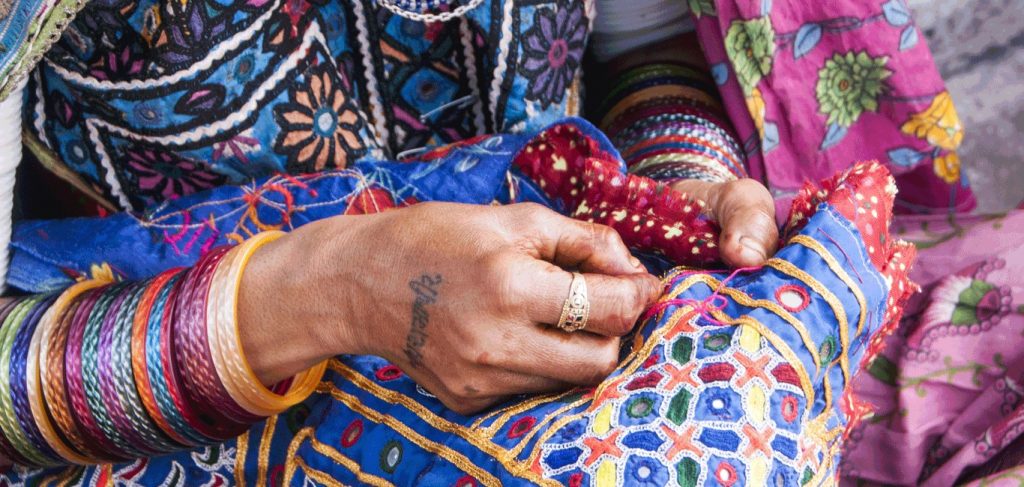
History of Kutch Embroidery
Kutch work or Kachchhi embroidery is one of the most distinctive and easily identifiable craft styles of India, which is derived from its region of origin, the Kutch region of Gujarat. Kutch embroidery evolved when Greeks, Germans, Iranians and Iraqis migrated to Gujarat during the 16th and 17th centuries. Kutch embroidery consists of over 22 different embroidery types belonging to different communities but with distinctive motifs and designs.
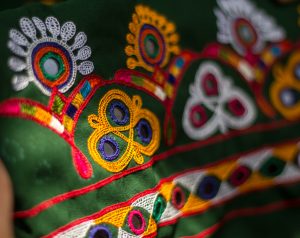
Kutch Embroidery
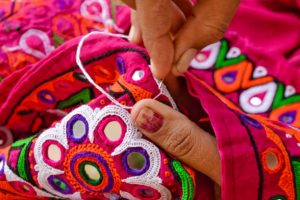
Kutch Woman Hand Sewin
In the regions of Kutch and Saurashtra where the local artisans are known for their exquisite and creative designs. The inspiration is derived from the motifs like animals and birds, geometric patterns, and dancing romantic human figures. The crafters also take inspiration from Mughal and Persian art. The embroidery is crafted on cotton or silk fabric with silk or wool yarn using mirrors, shells and beads as embellishments. They use vibrant combinations of colours like green, yellow, deep red, ivory, black, indigo etc., to give life to their art forms, they ornate the entire fabric to make it look richer.
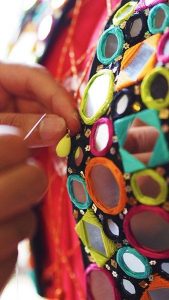
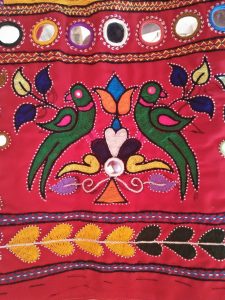
Types of Embroidery
Kutch embroidery is an artwork of international renown because of its impeccable designs, which are a tribute to Rabaris, a nomadic tribe. Read along to learn more about the distinctive form of Singh-Kutch embroideries are:
Ahir: The design is distinguished by a chain stitch framing the design, consisting of a rhythmic row pattern and using a herringbone stitch to fill the patterns in circular mirror work. As being from a cultural community, their work represented nature, such as birds and animals.
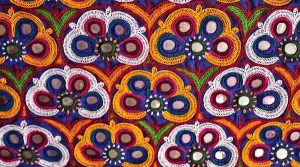
Rhythmic Row Pattern

Bird-Inspired Kutch Embroidery
Rabari: This form of embroidery gets its name from the sub-community of Rabari in the Giri region that engages in the craft. Rabari is incorporated with mirrors called abhla in different shapes and sizes, patterns adopted from mythology in a square chain, double buttonhole, pattern darning, running stitch, satin and straight stitches sewn in vibrant colors.

Abhla Work

Intricate Vibrant Color
Mutwa: This embroidery is done by the highly skilled women of the Maldhari community, specializing in single-thread embroidery. The work is intricately delicate, designed mainly in a geometric pattern in a combination of stitches like Suf and Paako and embellished with mirrors to create an aura.
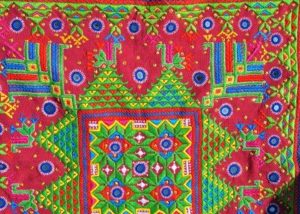
Intricate Geometric Pattern
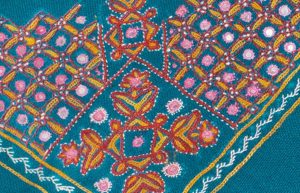
Single-thread embroidery
Sufi: This form is also known as Sindhi embroidery, meaning “neat and clean.” The artisan does not draw the designs. They visualize the pattern and create it directly on the fabric by counting the warp and weft yarns, displaying geometric designs dominated by chevrons and small triangles, creating a unique pattern.
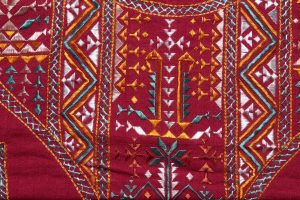
Chevron Small Triangle Pattern
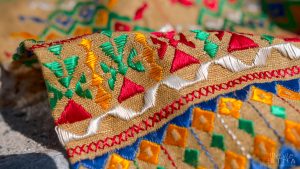
Warp and Weft Direct Creation
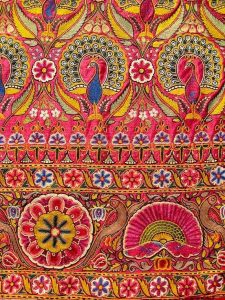
Nature-Inspired Work
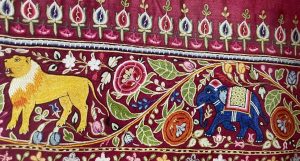
Mughal-Inspired Kutch Embroidery
Designer Surekha Jain In 2010, Couturier Surekha Jain re-created the aura of vintage Europe and regal India in her feminine and flowing celebration collection. She combined Eastern mystique with a Western sensibility to create a unique style that brings the best of both worlds together. For more than a decade, she had developed a global appeal for her design aesthetic characterized by mirror work, kutch embroidery, and other classic embellishments, which you can now find on Revivify.


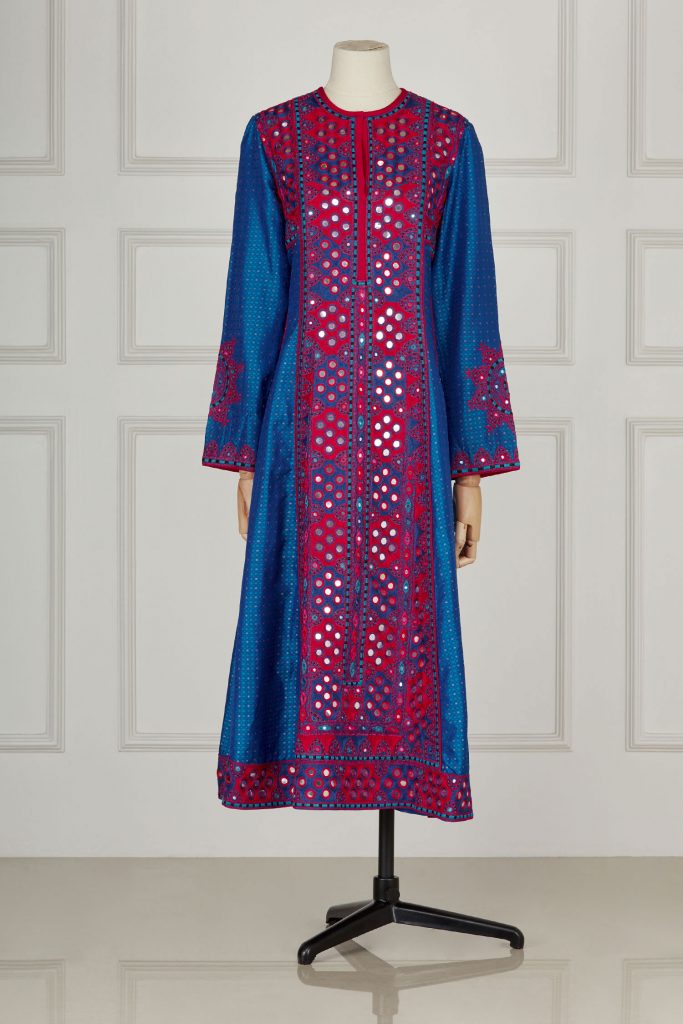
A tonal appeal is created by Surekha Jain by recapturing the sheen of mirror and thread work
Fashion with Kutch Embroidery
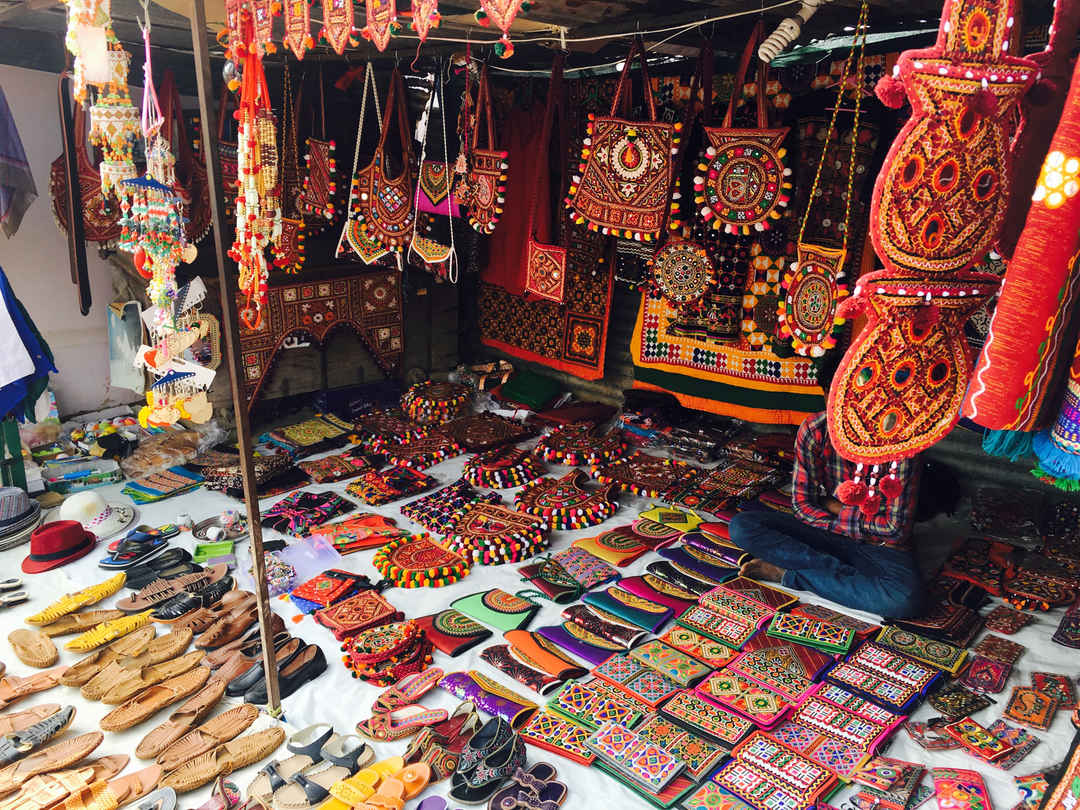
Products Made of Kutch Embroidery
Products Made of Kutch Embroidery
The versatility of this embroidery is unique. The artwork was initially seen on garments, and lately, it is used in patchwork quilts, shoulder bags, clutches, Kolhapuri chappals, dresses, jackets and wall hangings. It never loses its charm. India owes its rich heritage in embroidery work to the state of Gujarat. It has been appreciated by people from all over the world, and people specifically visit Kutch when in India for its unique embroidered products. You can also visit our website Revivify.com to explore Kutchi embroidered outfits for your special occasion.

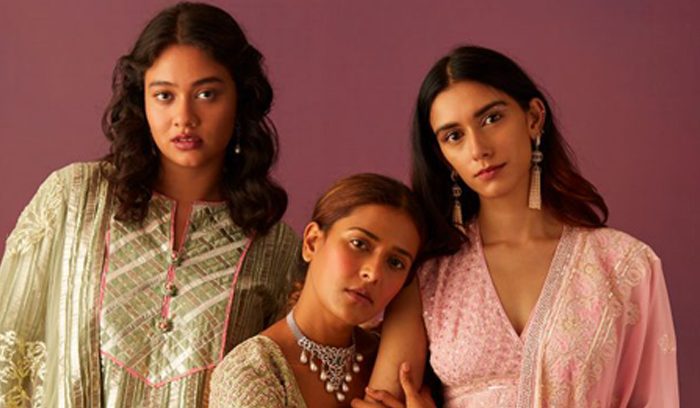
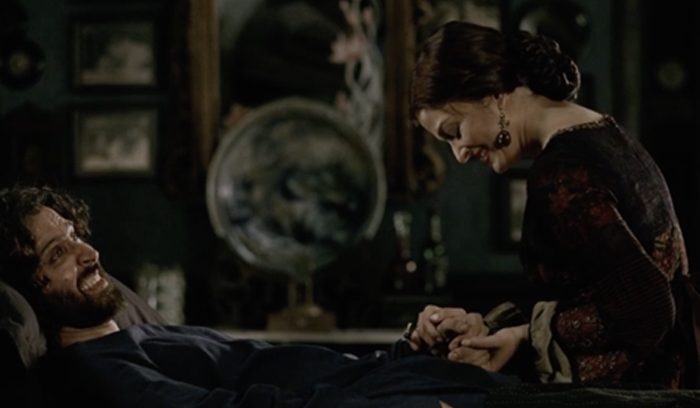

Leave A Reply